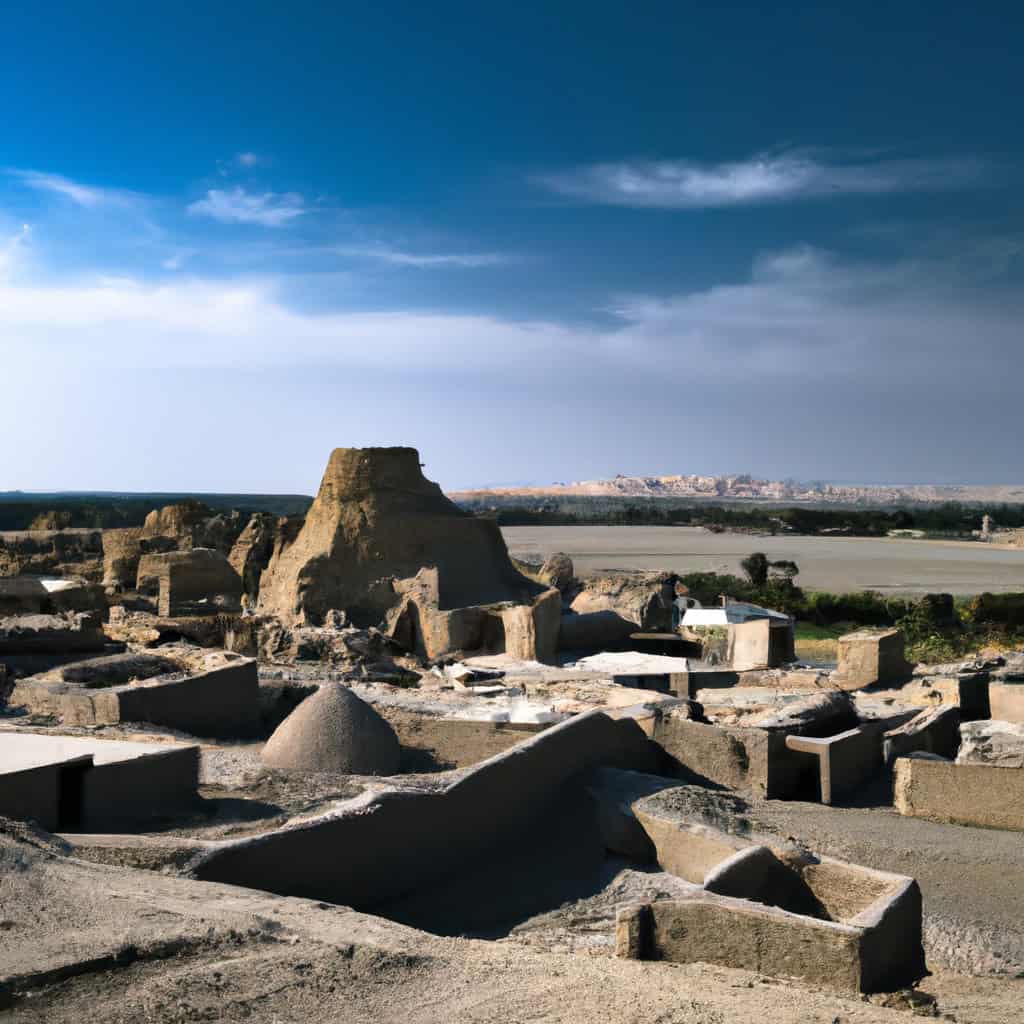Ancient City of Balkh in near Mazar-i-Sharif, is one of many fascinating sites that both foreign visitors and local tourists can explore while they visit Afghanistan and exploring Balkh Province. Nestled in the lap of history, this vast ancient city holds a trove of archaeological riches and cultural narratives that unfold like pages from a time-worn manuscript. Known as a cradle of civilization, the Ancient City of Balkh tells stories of a glorious past of power, wisdom, and architectural grandeur. Being one of the oldest cities in the world, Balkh takes its rightful place as an irreplaceable link to humanity’s shared heritage.
Ancient City of Balkh Most Important Events
- The Conquest by Alexander the Great: The Ancient City of Balkh came under the rule of the Macedonian conqueror Alexander the Great around 330 BC. This marked the start of Hellenistic cultural influence on the city, forever altering its cultural landscape.
- Shift to Muslim Rule: Balkh experienced a major shift in its governance and culture around 705 AD. It was conquered by the Arab Muslims, which started a long period of Islamic influence in the city.
- The Establishment of Balkh University: During the Golden Age of Islam, circa 9th Century AD, a top-notch learning institution, Balkh University, was established. This development marked Balkh as a significant center of learning in the medieval world.
History of Ancient City of Balkh
Originally, Balkh, known by its ancient name Bactra, began as a modest settlement as early as 2000 BC. Over centuries, it’s seen the rise and fall of powerful empires, each leaving their unique imprints. In the 6th century BC, it served as the capital of the Bactrian Empire. The region was ideally located along the Silk Road, leading to a blend of cultures observed in the architecture and heritage of the city.
A dramatic shift took place in 330 BC when Alexander the Great captured and developed the city. His influence is still palpable in the myriad Hellenistic architectural influences seen here. Under Greek rule, the city bloomed into a stunning metropolis, making it the jewel of the east.
The city transitioned into an Islamic centre after being conquered by Arab Muslims in 705 AD. During the Islamic Golden Age, Balkh was highly regarded for its intellectual contributions. The establishment of Balkh University added a jewel to its crown. Unfortunately, the grandeur of Balkh came to a devastating halt due to the Mongol invasion in the early 13th century.
Why It’s Important to Afghan History
The Ancient City of Balkh holds a unique position in Afghan history. It not only marks the era of Alexander the Great’s invasion but also highlights the transitional period of the Islamic Golden Age. It played an instrumental role in the cultural and intellectual development of Afghanistan.
Furthermore, being a part of the ancient Silk Route, Balkh represented economic prosperity and became an essential trading hub in Central Asia. This amassed wealth significantly contributed to the architectural splendour and development of the city, shaping the Afghani historical timeline.
Why to Visit Ancient City of Balkh
Visiting the Ancient City of Balkh is like stepping into a history book. Its ancient walls whisper hushed tales of ancient empires and civilizations, offering clues to our shared past. The ghost-like charm of its ruins, framed by nature’s grace, is a surreal experience for any traveller.
Not to mention the architectural marvel that is the city itself. From intricate Islamic craftsmanship to Hellenistic-inspired designs, it’s a feast for the eyes and the soul.
- Wandering down the narrow streets of the old city.
- Visiting the breathtaking architectural marvels such as the Haji Piyada Mosque and the Balkh Fort.
- Exploring the ruins of the ancient walls.
- Visiting local museums showcasing artifacts from different eras.
- Attending traditional Afghan folk music performances.
Balkh is located in the Balkh Province of Afghanistan, close to the city of Mazar-i-Sharif. Direct flights to Mazar-i-Sharif are available from several major cities. From Mazar, it’s a short drive to Balkh. The best time to visit is during the spring or autumn when the weather is moderate.
Cultural & Tourist Significance
Balkh holds high cultural significance for Afghanistan and the region. It was the birthplace of Zoroaster, the founder of Zoroastrianism, and the great poet Rumi. This diversity of spiritual influences gives Balkh a rich and layered cultural heritage.
Furthermore, Balkh was the capital of Khorasan, an administrative district during Abbasids rule, overseeing a vast region from the Caspian Sea to the Tigris River. This historical significance adds depth to the tourist experience.
Lastly, Balkh plays a critical role in sustaining and promoting the local economy through tourism. Visitors’ expenditures boost local businesses and stimulate the growth of the community.
Interesting Facts
Balkh has a fascinating trove of stories, mythologies, and legends. For instance, local lore labels Balkh as the ‘Mother of Cities,’ believed to have been founded by Keyumars, the first king of the world in Persian mythology.
Secondly, in its heyday, Balkh was known as the ‘Paris of the East’ due to its rich multicultural milieu. People from different cultures, ethnicities, and religions coexisted harmoniously, resulting in a city that was incredibly sophisticated for its time.
Finally, Zoroaster, the founder of Zoroastrianism, was born in Balkh, Afghanistan. His teachings, which emphasized monotheism and morality, significantly influenced the religious and philosophical outlook of the East.
While embarking on a trip to Afghanistan, one must not miss the chance to visit the ancient city of Balkh. Its historical significance, cultural richness, and architectural beauty render it as a must-see destination for any traveller venturing to this part of the world.

